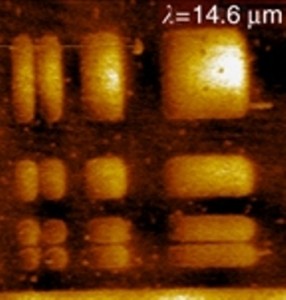A silicon chip with integrated laser and optical grating offers new possibilities for telecommunications
An ark-shaped diffraction grating is used to selectively reflect light from a laser back into the device. The photo also shows the waveguides used to channel light back and forth. Copyright : A*STAR Research Silicon is an ideal platform for integrated photonic circuits because the material is cheap and readily available. Silicon chips with an …









